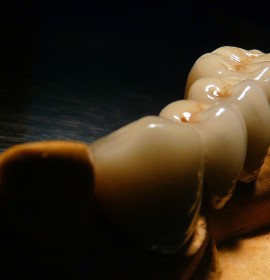
Bone Augmentation Treatment
Bone Grafts
A dental implant is an artificial tooth root replacement that is placed into your jaw to hold a replacement tooth or bridge. Dental implants are often performed for those who have lost a tooth or teeth due to periodontal disease, an injury, or some other reason.
However, for dental implants to be successful, the jawbone must have enough bone to support them. If there is loss of bone due to periodontal (gum) disease, injury or trauma, or a developmental defect among other reasons you will need an additional procedure to add bone to your jaw before implants can be placed.
 The term used to describe the variety of procedures that are used to “build” bone is bone augmentation. The procedure involves grafting bone or bonelike materials to the jaw. Several different procedures can be used for bone augmentation. Your dentist will select a procedure depending on the type, location and number of implants to be used.
The term used to describe the variety of procedures that are used to “build” bone is bone augmentation. The procedure involves grafting bone or bonelike materials to the jaw. Several different procedures can be used for bone augmentation. Your dentist will select a procedure depending on the type, location and number of implants to be used.
Bone augmentation procedures typically involve the use of bone grafts. The best material for a bone graft is your own bone, though there are other options available to you.
In a typical situation, a patient who has lost a single tooth and wants to have it replaced with a crown supported by a dental implant. However, the tooth has been missing for several years and there is not enough bone to support the implant. In this case, bone taken from the patient’s chin can be used to “rebuild” the lost bone so that it can support an implant. This type of procedure would be done in a dentist’s office.
Another type of bone-augmentation procedure is called a sinus lift or elevation. It increases the height of your upper jaw by filling part of the area above your jaw on either side of your nose with bone. This is done when there is not enough bone to allow implants to be placed in the back part of the upper jaw.
A ridge expansion is a type of bone graft that can be done when the jaw is not wide enough to support implants. The success rate for bone grafts in the jaws is very high and over the years, most dentists will place implants directly after this procedure. This procedure can be done in the dental office under local anesthesia.
Leave a comment





